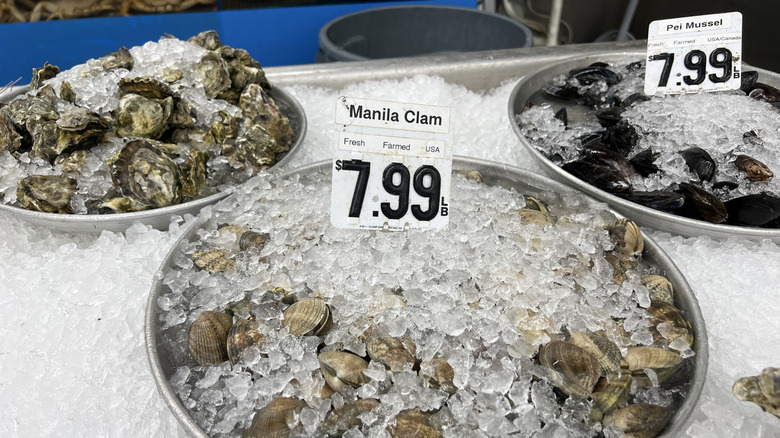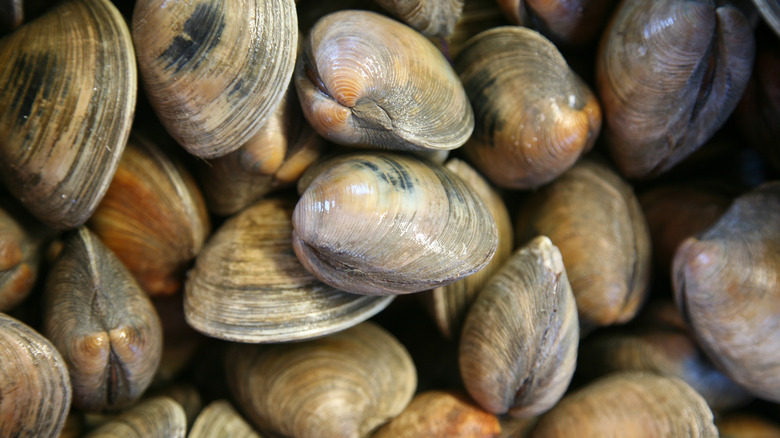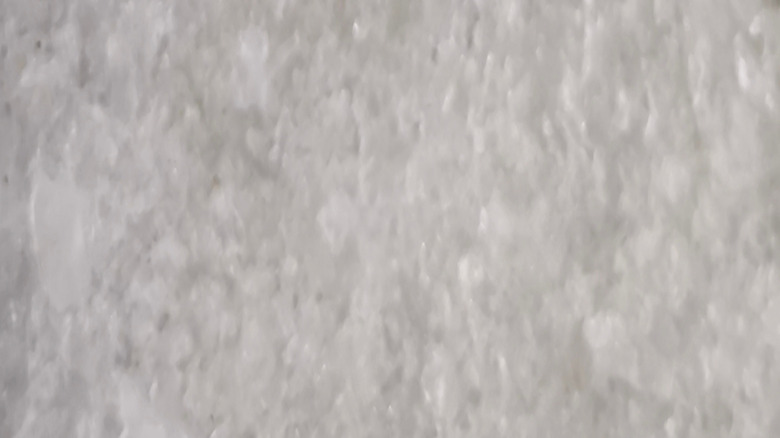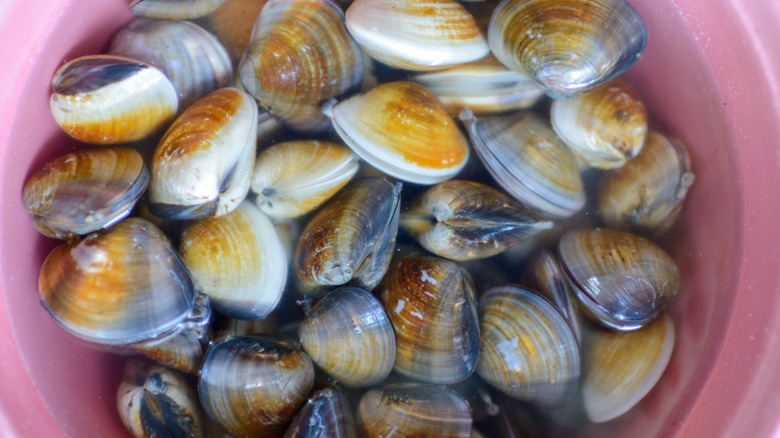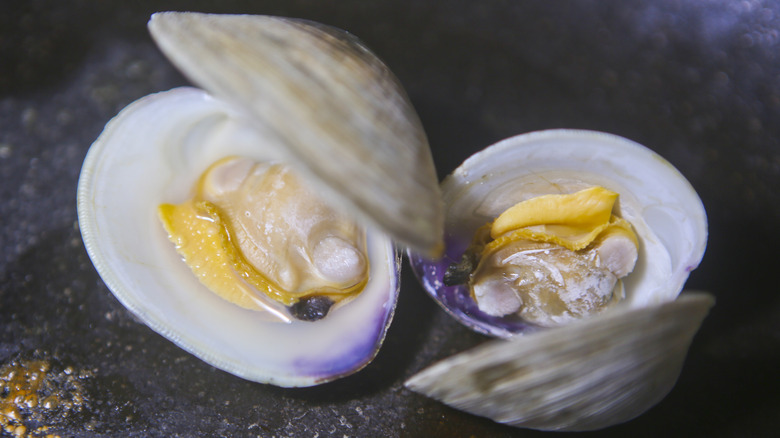Are Your Raw Clams Safe To Eat? 5 Signs You Need To Watch Out For
Overshadowed by foodstuffs like tuna, sea urchins, and oysters, clams aren't often associated with raw seafood. Yet, from New England to Japan, several regions showcase the beauty of the mollusk sans cooking. Especially when sourced locally, the raw seafood offers a delightful salty flavor underlaid by gentle sweetness. Contained in its natural, aesthetic shell, raw clams can easily be served on their own, or topped with a flourish like herbs or pickled vegetables.
Nevertheless, there is one caveat; you'll want to make sure they're fresh. In addition to less-than-delicious flavors, the potential sides of a bad batch aren't so fun: Think the worst kind of stomach issues, nausea, and chills, according to the Virginia Department of Health. The food presents a risk due to both the source ecology, as well as diseases that spread during handling. You'll need to avoid eating mollusks that died during distribution, as they quickly turn foul — a reason to avoid clams that don't open during cooking.
There's always a risk in consuming raw seafood, but rest assured, you can take certain precautions. Producers pay attention to the quality of their clams, but follow up by looking for certain signs while shopping. Inspect raw clams visually, through smell, and other physical tests and you'll get added reassurance regarding edibility. And if the nervousness settles in, consider cooking up a pot of clam chowder instead. But if raw clams are your preference, these are some ways to ensure quality.
Inspect the seafood purveyor first
Start your clam shopping by noting the seller. Since you'll want the freshest mollusks, it's a good idea to buy directly from a respectable fishmonger. Check that the clams were harvested domestically, and inquire regarding even more regionally-specific origins if you can. Take a look at the storage conditions: The clams should be kept cold, typically laid atop ice. If inside a container, it's essential that the bag is porous; avoid buying clams suffocated by plastic. And if the area doesn't look clean or smells bad, then you'll definitely want to avoid eating the mollusks raw.
Make sure the clams have no off-putting odor
When it comes to the senses, you'll want to first use your nose to purchase clams. If the mollusks are giving off unpleasant smells, they're certainly not good to eat. In fact, a particularly strong odor is a sign the interior clam inside is no longer alive. Under no circumstance go forward with consumption when the smell's off-putting: Dead clams are an especially risky source of food-borne illness.
Instead, buy clams with an aroma that is just a little salty, and pleasantly marine. Think of it like an enticing sea breeze on the oceanside; the aromas should increase the appetite rather than turn away. So if your fishmonger's clams don't smell great up close, pass up raw consumption for another day.
Look for signs of physical damage on the shell
Inspect a little closer, and you'll want to ensure there aren't too many broken shells. Cracked or chipped shells are a no go; it increases the risk that the mollusk's perished. Furthermore, it also invites the possibility of contamination. So even if it's just a small chipped section, make sure to discard from the batch.
With the soft shell variety, a small opening between the two shells is natural. Tap the clam; if there's movement, then it's still safe for consumption. On the other hand, hard shell clams should seal completely, especially after agitation. And if you're able to crack open the mollusk manually, then certainly don't risk it with raw enjoyment.
Use the float test to verify the clam's alive
Such external examinations are essential, but they're not enough to ensure that your raw clams are safe to eat. Take it one step further by employing the sink or float method. You'll need to rinse the mollusks of sand anyways, so go ahead and submerge all of them underwater. If any float, this means they're deceased and should be discarded immediately.
This soaking step is also essential for removing sediment inside the clam. Salt the water beforehand, and let the clams sit for around half an hour. Through their natural filtration processes, the clams will release sand trapped inside, ensuring you won't get grit in your bite. Oftentimes, mollusks sold at fishmongers will have already gone through this step, but an extra round never hurts. You'll also want to scrub off any seaweed and carefully look for any sand: No one wants coarse sediment in their raw clam. And further extend shelf-life by knowing the best way to store clams for maximum freshness.
Look for visual signs once open
Whether it's oyster or clams, shucking mollusks takes some effort, so consider asking a friendly fishmonger for help. And once opened, you'll want to make your final round of inspection. The saying goes that we eat with our eyes; and this statement surely applies to clams. Carefully look for shriveling, as this signals the clam has been removed from saltwater for too long. The appearance should be meaty, with intact flesh, and a lack of off-putting colors. Clam varieties vary in shade, so don't worry whether it's a grey or orange, but if there's a caught piece of seaweed or sand, no need to go for a raw bite.

